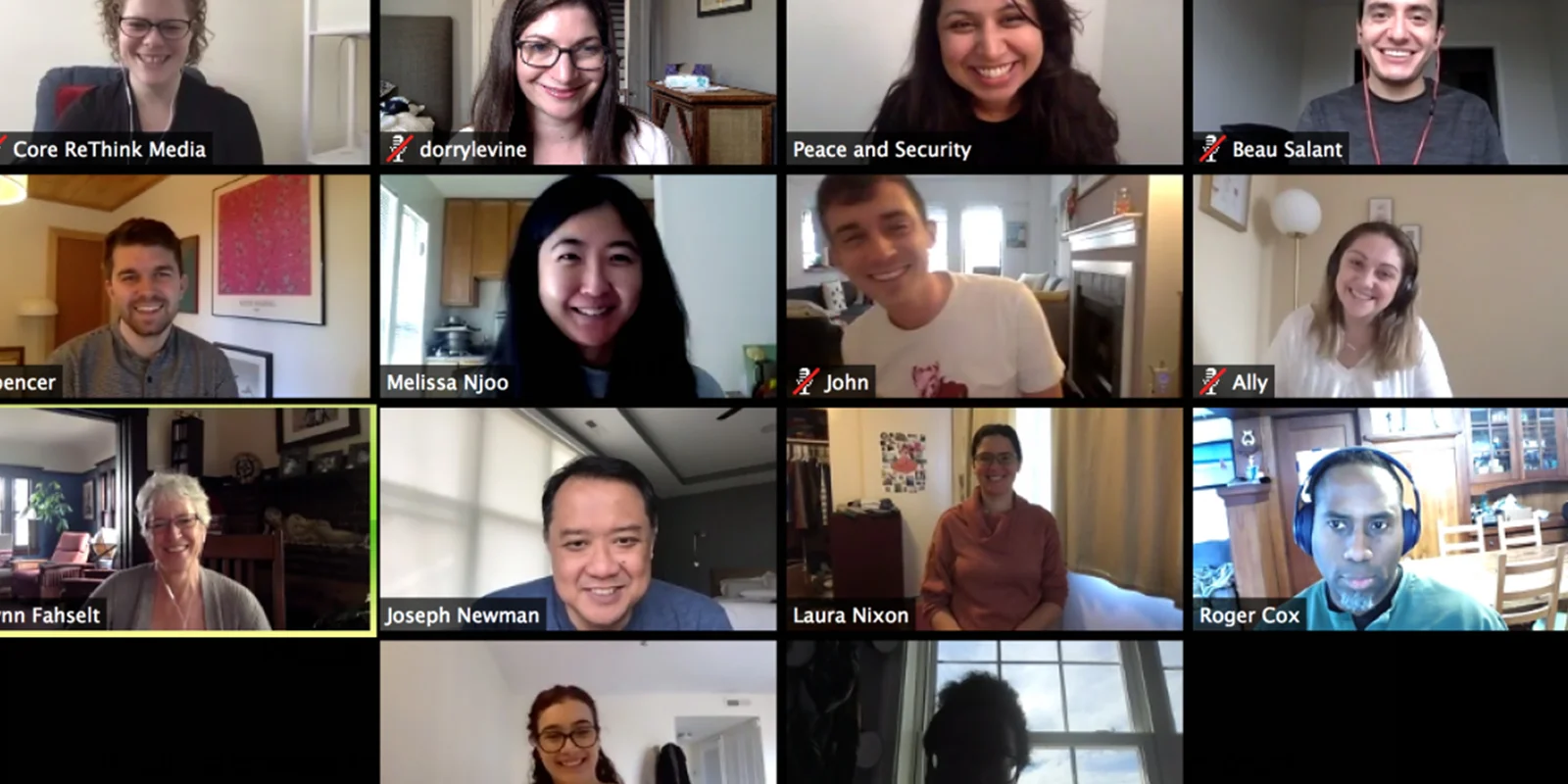
Taking Care of Yourself, Your Staff, and Ensuring Our Critical Work Continues Apace
Thanks to all of you who have shared the steps you are taking to both take care of yourself and your staff and to ensure our critical work continues.
All of your great ideas have informed and inspired some of our own. In order to stay safe and connected as staff within and across our teams, here at ReThink, we are encouraging the following:
First and foremost, self-care is more important than ever:
We are all anxious about this pandemic, and the safety and health of our families, friends, and communities, which makes it all the more important that we take extra care with ourselves.
- We are encouraging each of our staff to build a self-care plan and share it with their supervisor and teammates. (Below are some resources that may help with this.)
- We will be asking our staff about their health, their mental state, and what’s going on with their family and friends more often than usual. Not to be nosy—but because we are genuinely concerned about each other’s health and well-being, and isolation generally compounds stress.
- We will be offering a webinar to our community members to learn how to build resilience in times of uncertainty. Stay tuned for details.
Resources for self-care:
- How to Manage Coronavirus Anxiety, One Medical
- What to Watch, Listen to, and Cook During Your Coronavirus Self-Quarantine, New York Times
- The Best Ways to Practice Self-Care While Social Distancing, Vogue
Team/organization practices for social distancing mode
- We will be doing more frequent, short check-ins with teams and individually. Including encouraging supervisors to do daily scrums with every staff person and their team to check in on how they are doing and to set the priorities and tasks for the day.
- We will be using our calendars and time-blocking to make our work visible to others. Keep your supervisor and colleagues apprised of what you’re working on, where you’re getting stuck, and what you need from them.
- We will be standardizing our organization-wide communication platform and protocols. We’re going to be adopting Slack; here is a fantastic resource for using the platform to its greatest potential, including a chapter on Strategies for Effective Communications on Slack for your organizations (ch 6). We know other colleagues are adopting Microsoft Teams and other software, but firmly believe that formalizing our internal communication is essential.
- Make it a habit to use video whenever you’re speaking with someone.
- We will hold more frequent all-staff meetings and meet-ups starting next week.
- Consider adopting productivity habits like work blocking on your calendar or the Pomodoro method to help you focus (and to let your team know what you’re up to).
- Brush off your library card and take a class by signing up for a free account with Lynda.com. YES, it’s free through your local library!
Individual practices for successfully working from home
- Create an ergonomically-supportive work space. Although it’s tempting to work from the couch, it’s better to spend most of your time sitting or standing upright, with your frame properly supported. Use an external mouse/trackpad and keyboard if you prefer. Think about adding a cushion under or behind you if your chair is too low relative to your table/desk, put a box under your feet if it’s too high off the floor, etc.
- Separate your work space from your non-work space as much as possible.
- Demarcate your work space and time from your non-work space and time by adopting “rituals.” This can be as simple as, “I begin my work day by flipping to a new page in my notebook, getting a glass of water, and taking three deep breaths. I end my work day by closing my laptop, putting it in its sleeve, and wiping off the kitchen table.”
- Working from home can be isolating, especially if you do so for a while. Make an effort to chat with your colleagues, reach out to someone you haven’t talked to in a while, set aside time in meetings to just connect.
- Develop or follow a task management system to manage your workload. Talk to your supervisor or me if you want tips/help/training.
- Get dressed. Sticking to your normal workday routine as much as you can help create continuity, put you into work mode, and separate work from personal. (You can keep your slippers on, though.)
- Get up. Sitting too long is bad for your health, but it’s also bad for your productivity. Try out an app like Time Out to make sure I’m getting up every 30 minutes, which also helps if you have chronic neck, shoulder, or back pain, like many of us.
More resources for working from home
- How to Work from Home, New York Times
- 7 Weird Ways to Help Combat ‘Hermit’ Habits as a Remote Worker, Trello
- How to Be a Happy and Productive Remote Worker, Trello (they have a TON of posts on remote work, I’ll stop at two)
- How to Work from Home, Now that You’ve Been Told To, Wirecutter
What other things are your organizations doing to stay connected, protect each other, and continue the work during this time of uncertainty? What strategies have been helpful for you while working for home? How else would you love to see our communities support each other right now? Please reach out to us @rethink_media and let us know (or contact us directly).



